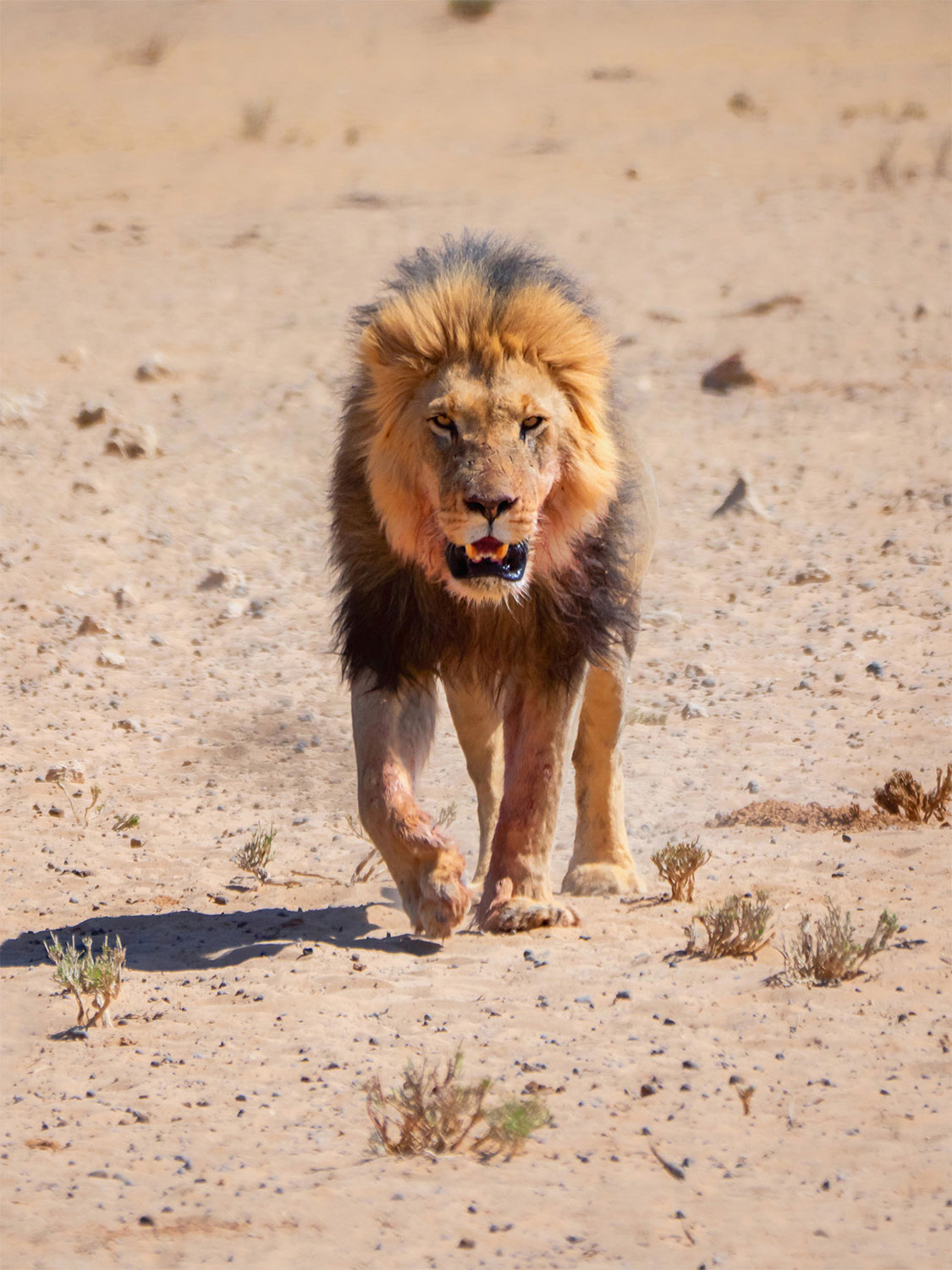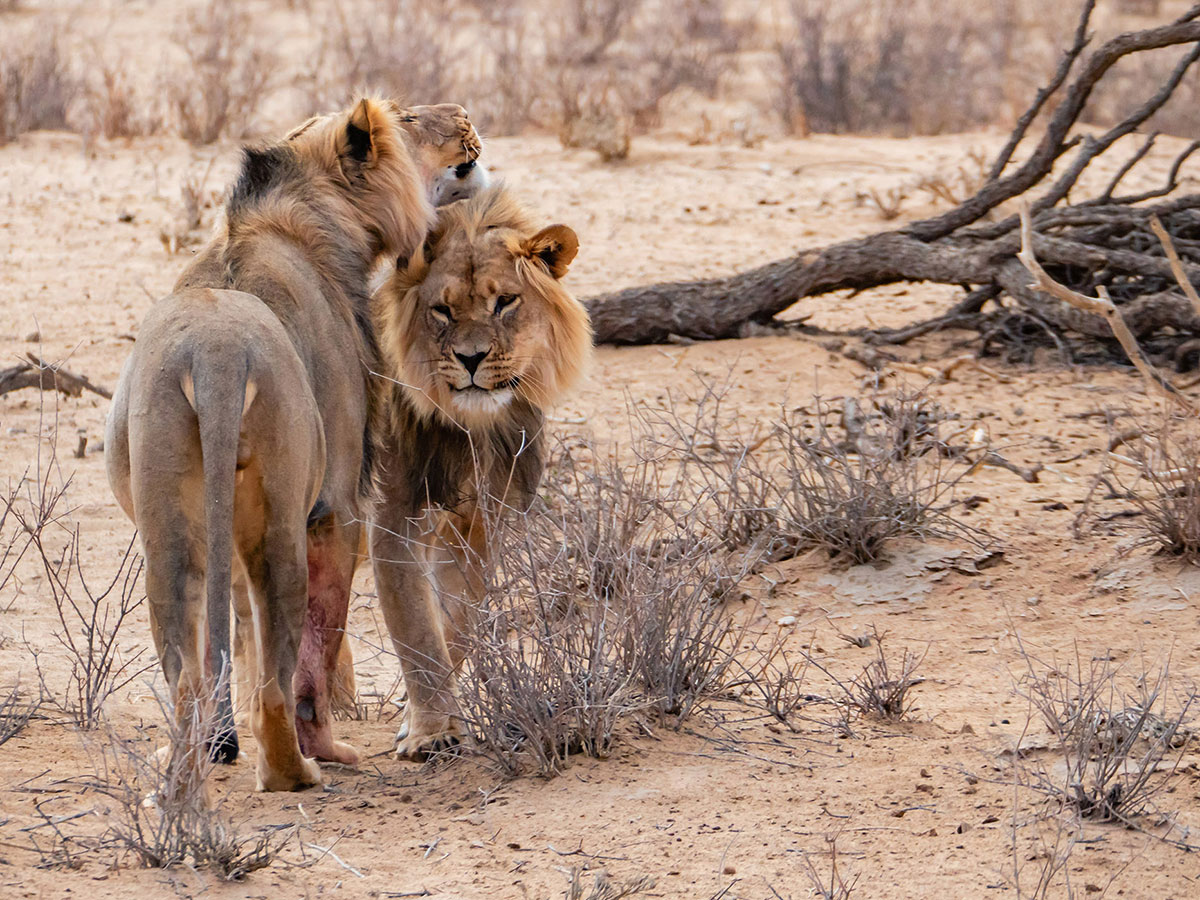
Big cats in their natural habitat, it’s a sight that never gets boring. Wildlife photographer Jon Bryant visited the Kgalagadi Transfrontier National Park that straddles the border between South Africa and Botswana in October last year. ‘This was my first visit to this incredible park which is a gateway to the Kalahari and has a special ecosystem. You won’t find the big five here, but it’s the territory of some very special animals, for instance, black-mane lions.’ The lions and other big cats, the dry land and red dunes: it's a combination every photographer dreams of. But the intense heat, drought and sandstorms make it a harsh environment. Luckily, his gear stood up to the test.
The Kgalagadi National Park was on Jon’s wish list for years. In October last year, he was finally able to fulfil this dream. He went to the park, located on the border between South Africa and Botswana, for ten days. ‘It’s a special park with a unique ecosystem, a very dry environment with characteristic red dunes.’
Lions, known as the kings of the savannah, are in decline. ‘Lions were placed on the endangered species list in 1996, but over the past twenty years their overall numbers in Africa have declined by 43 percent. It’s a different story in the Kgalagadi, where the lions are doing quite well, despite the harsh environment. Their habitat is three or four times larger than that of other lions in Africa. They have to cover longer distances to hunt, and even then, their success rate is quite low.’
He got a really good sense of what it is like to live in this area on the very first day. ‘There was a massive sandstorm that was so fierce it blew loads of sand into the rooms at the lodge.
Everything was covered with dust, even my equipment.’ Luckily, his kit wasn’t harmed. ‘The cameras and lenses are dust and waterproof, but I was glad that I’d taken two cameras. It meant I didn’t have to switch lenses. With all the dust, it would be hard to prevent it from getting on the sensor.’
He took the LUMIX G9 and GH5 and a selection of lenses. ‘The 100-400mm f4.0-6.3 was my primary lens. Because off-roading is forbidden in the Kgalagadi the distances between you and the animals can sometimes be quite long. This lens worked really well as my primary wildlife lens, and doubled up as an excellent birding lens. The second one was the 50-200mm f2.8-4.0 lens. I could frame well with it when an animal approached our game vehicle. The third lens was the 14-140mm f3.5-5.6 II. With this I could take much wider angle shots at 14mm, and could also get additional focal lengths up to 140mm telephoto.’
‘Combined with the ability to tether the GH5 of G9 to the LUMIX image app for remote shooting, the 14-140 mm is a very creative lens that enabled me to shoot a range of different types of wildlife images without the need to change lenses for the various focal lengths. Add to this the dual image stabilisation and the dust and splash proof weathering and you have an ideal camera for beginners and professional wildlife photographers alike, and it certainly increases your flexibility when you’re on the road.’
The most memorable encounter of the trip wasn’t with a lion. ‘I saw my first caracal. That was really special. The caracal is a medium sized wild cat, which resembles our domestic cat.
It moves with the same grace. It’s a fearsome predator though.’
Jon feels blessed that he’s able to see these animals in the wild. ‘I know most people can’t experience this. That’s why I like to show these animals in the wild. People can see how they’re struggling to survive. Sadly we humans pose a direct threat. The more we encroach on their territory, the more their natural environment shrinks, and with that, their chances. We have to do everything possible to protect these animals, and it starts with by prioritising their natural habitat. That’s the message I hope to convey with my photos.’

Jon Bryant
Jon Bryant is a wildlife and landscape photographer. After many years experience as a videographer Jon was an early adopter of the new generation of mirrorless hybrid stills/video cameras. It is with these cameras that Jon developed his passion for stills photograph and specifically wildlife photography. Originally from the UK, but based in Belgium, Jon regularly travels to Southern Africa to some of the world's most renowned game reserves on his quest to capture and document wildlife and natural history with both still and moving images. His work has been featured in a number of leading wildlife publications.
Visit Jon Bryant`s Ambassador Profile













